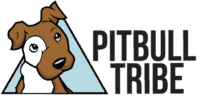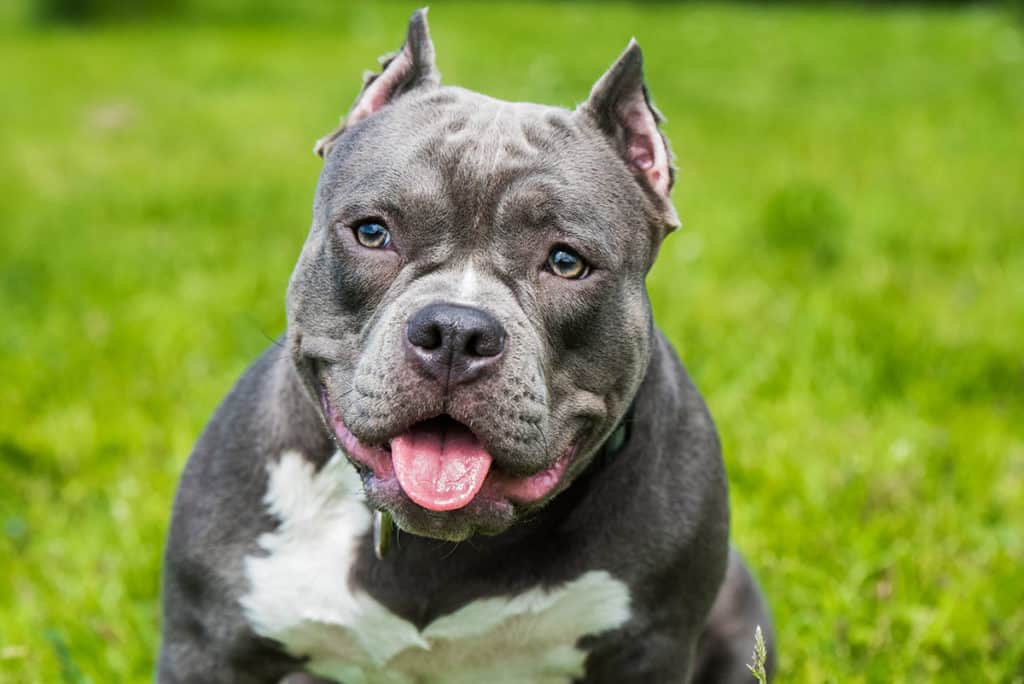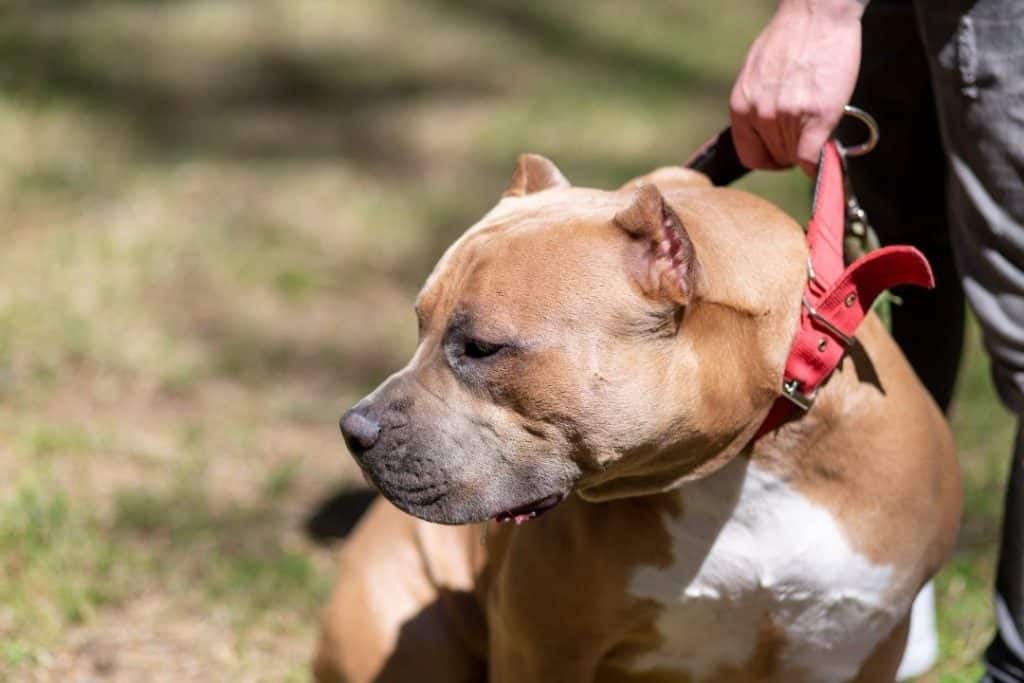This article may contain affiliate links, and I will be compensated if you make a purchase after clicking on my links (at no additional cost to you)
American Bullies can look fierce and intimidating, but they’re sweethearts once you get to know them. Part of what makes them look so tough is their heads, which are usually big and thick with jaws that could bite through steel.
Still, not all dogs fit the standards perfectly.
So why does your american bully have a small head?
Your American Bully might have a small head due to genetics, its age, or its breed class. Some health issues such as hip dysplasia might also reduce the head size of your Bully. Still, if you give your American Bully plenty of exercise, you can increase its head size a bit.
So, let’s discuss why an American Bully’s head might be a bit smaller than desired. I’ll tell you about genetics, the classes of American Bullies, and some health conditions that might affect your Bully’s head size.
Reasons Your American Bully Has a Small Head
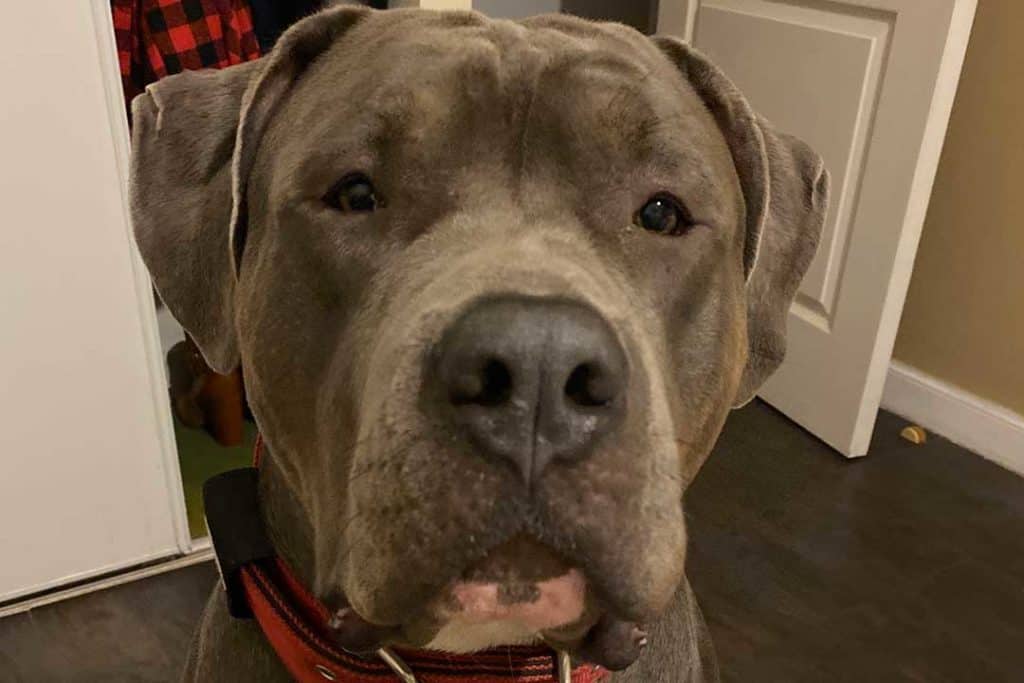
The American Bully is a relatively new breed of dog, and it has the physical characteristics of a bulky Bulldog or Pit Bull Terrier but the gentleness and friendliness of a classic companion dog.
This contrast between the American Bully’s staunch physique and soft heart is part of what I love about them, but not all Bullies have such a striking appearance.
American Bullies are generally bred for their stockiness, broad chests, and powerful appearance. Ideally, their heads should also be wide and strong with round jaw muscles.
The appearance of an American Bully exaggerates the bulldog physique to the point where he looks a bit like a cartoon. These dogs have a unique shape that differentiates them from other dog breeds, making their oversized jaws and heads desirable for breeders and dog show competitors.
While American Bullies tend to have largish heads, the breed standards don’t call for an enormous head. The head should still be “in proportion to the body,” but with such a broad body, that usually means a pretty wide, chunky head.
Your dog may have a larger head or a smaller one, depending on a wide range of factors. Let’s look at the most common ones that might result in an undersized Bully head:
Genetics
Nine times out of ten, a small Bully head results from genetics.
Dog genetics isn’t an exact science. Your breeder can influence how a litter of puppies looks, but they cannot control every detail.
If your Bully has a small head, it might just have had an ancestor who didn’t have an enormous head. It’s also possible that your dog has a recent non-Bully ancestor, and that’s affecting your dog’s head size.
You Have a “Classic” Bully
If your dog’s head is small, you may also have adopted a “classic” Bully.
American Bullies come in four classes or varieties. Most of the types are differentiated by the dog’s size. There’s a “Pocket” Bully that stands about 18 inches (45 cm) tall at the shoulders and an “XL” version that is around 2 feet (60 cm) tall.
The “Extreme” and “Classic” Bullies are between the Pocket- and XL-sized Bullies. The “Extreme” is just an average-sized bully that is a little more than 2 feet (60 cm) tall.
But the “Classic” Bully is a bit of a throwback. He should have the friendly disposition, but the physique is more like that of a pit bull and the other ancestors of American Bulldogs.
He’ll still have solid muscles, but he’ll look less like the cartoon. His shoulders and stance won’t be quite as broad as other Bullies, and usually, his head will be smaller and less muscular than the different classes of American Bullies.
The Classic Bully’s overall shape will be more like regular dogs. With the slightly narrower shoulders, the head won’t be quite as broad either — and that could leave the impression that your dog’s head is small for his breed.
For a visual representation of the differences between these classes, check out this video from Bully Max on YouTube:
Your Dog Is a Puppy
One last possibility is that your Bully is still a puppy, and its head hasn’t fully developed yet.
For breeds with large heads like the American Bully, most of their head growth will occur between 9 and 18 months of age. If your Bully is less than a year old, his head may just be catching up to his body.
How Can You Make Your American Bully’s Head Larger?

Although there’s nothing you can do about genetics, there’s a way to boost your American Bully’s jawline to make it look larger, rounder, and more pronounced.
To make your American Bully’s head larger, encourage them to exercise and give them some toys or treats to chew on. Most of an American Bully’s head is made up of solid and large muscles, so ensuring that they get the proper workout can increase the muscle size.
If you want your American Bully dog to look his best, you want him to have the muscles that match the frame. That includes the neck and jaw muscles that’ll give your Bully that gruff-but-loveable appearance and characteristic large head.
Your American Bully will have lots of energy, so don’t worry that he won’t want to go out and play.
Long runs will help develop neck muscles, but you should add some fetch and catch games to work those jaw muscles.
For the ultimate jaw workout, try playing tug-of-war with the Dewonch No Stuffs Tug Toy (available on Amazon.com), which will be fun for you and your pup. You can also offer your Bully more bones, chew toys, or a slow-feeder bowl to help them get a more chiseled, powerful head.
Other Health Issues That May Have Affected a Bully’s Size
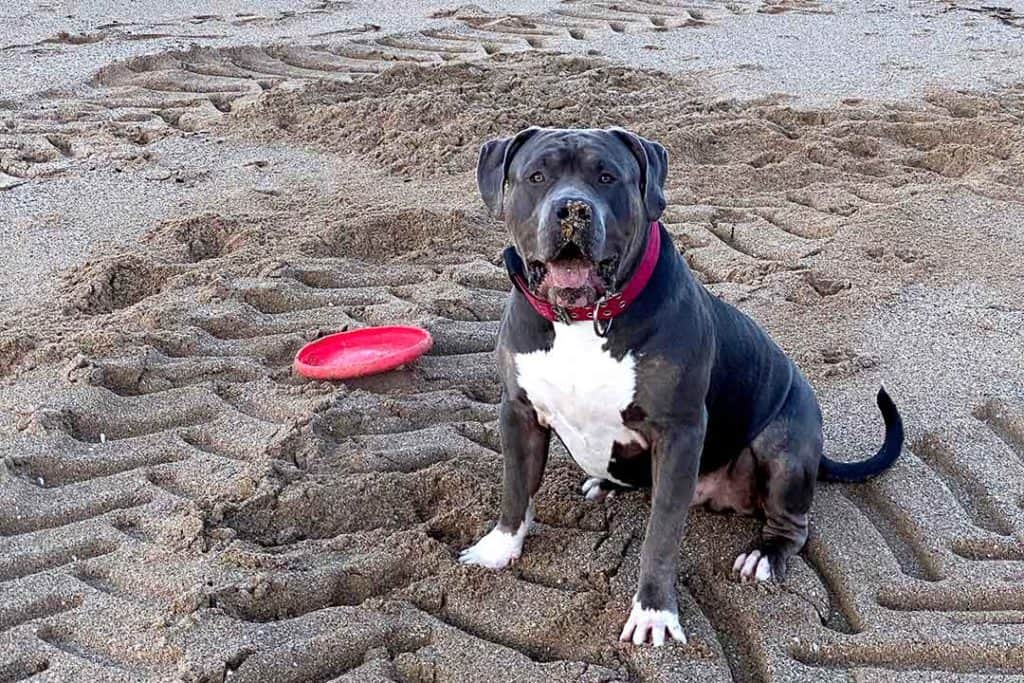
American Bullies may look indestructible, but like any dog breed, they have their vulnerabilities. Bullies that have had health issues in the past or present may have stunted growth, affecting their adult size.
Sometimes, American Bullies with smaller heads have suffered from one or more health concerns early in life, so keeping your dog healthy is one of the best ways to ensure that they reach their full majesty.
Here are some other things to look out for if you want your dog to develop correctly and live a healthy life:
Hip Dysplasia
A dog’s hips work on the same principle as a human’s — it’s sort of a ball-and-socket arrangement with the ball at the top of the thigh bone fitting into a socket at the hip bone. There’s also a bit of cartilage between the ball and socket.
When that cartilage wears away, your dog can suffer as bone grinds up against bone in the hip. American Bullies are prone to this because their bones sometimes grow faster than the muscles needed to keep them in place, increasing the wear on the cartilage.
Fortunately, you can ease the symptoms by managing your Bully’s weight or with pain medication. There’s also hip replacement surgery as a last resort.
Heart Disease
Your dog may inherit this from one of his forerunner breeds, the English Bulldog. But obesity and heartworm can aggravate this problem even further. So make sure your dog gets treated for parasites. This is another good reason to make sure your dog stays at a healthy weight.
Skin Diseases
American Bullies usually have a nice smooth coat of short fur with few wrinkles other than the snout area. But they’re vulnerable to eczema and seborrhea. Keep an eye open for signs of excessively dry or oily skin.
You should also watch out for “hot spots,” where skin can become irritated and eventually lose hair. Hot spots have many possible causes, but regular bathing and parasite prevention can minimize the risk. Be sure and groom your dog regularly, but don’t overdo it — too much grooming can also contribute to hot spots.
Eye Diseases
Your American Bully will be prone to “cherry eye,” entropion, dry eye, and corneal ulcers. You’ll want to check your Bully’s eyes regularly for signs of obstructions, trouble with the eyelids, or lack of moisture.
“Cherry Eye” results from your Bully’s third eyelid failing. The failing eyelid will pull a gland out of place, and that gland will become a reddish obstruction on the eye. A veterinarian can remove the gland.
Entropion means that part of the eyelid rolls inwards.
Don’t hesitate to have your dog checked if he shows signs of discomfort involving his eyes.
Conclusion
American Bullies combine a sweet disposition with a powerful, tough-looking exterior. The best bullies will have both.
There are several reasons why your American Bully might not have an overly large head, including its ancestors, class size, age, physical fitness, and health. So, to help your dog develop a powerful head, give them something to chew on and prevent any health issues that might stunt their growth.
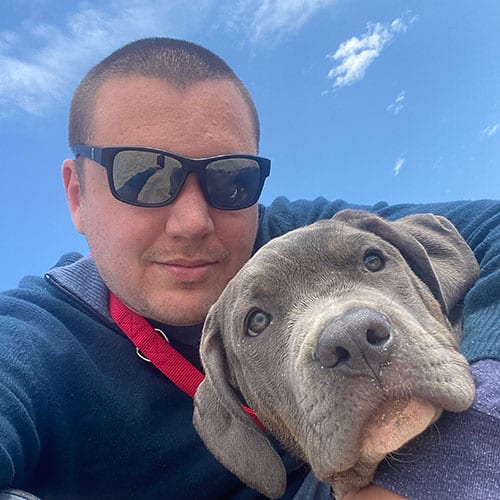
I created this blog to share my passion for bullies, and help current and future pitbull owners with things like diet and education.
Hope you find it useful, don’t hesitate to drop a comment on my articles!
